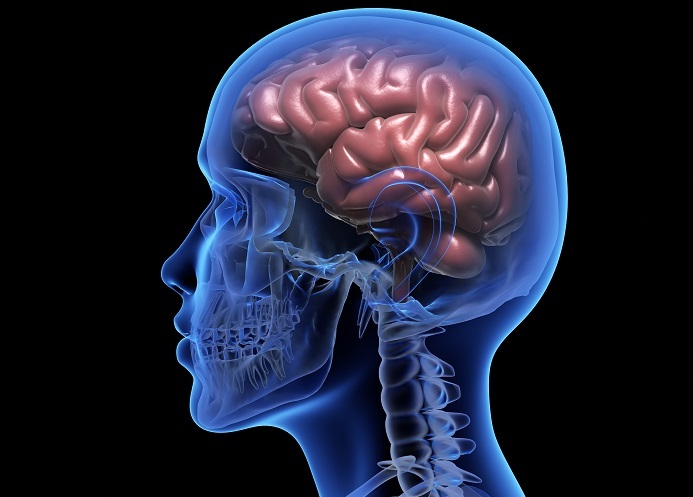
 Data Structure
Data Structure Networking
Networking RDBMS
RDBMS Operating System
Operating System Java
Java MS Excel
MS Excel iOS
iOS HTML
HTML CSS
CSS Android
Android Python
Python C Programming
C Programming C++
C++ C#
C# MongoDB
MongoDB MySQL
MySQL Javascript
Javascript PHP
PHP
- Selected Reading
- UPSC IAS Exams Notes
- Developer's Best Practices
- Questions and Answers
- Effective Resume Writing
- HR Interview Questions
- Computer Glossary
- Who is Who
What is the full form of HTM?
Introduction
Hierarchical Temporal Memory (HTM) is a device assessing algorithms stimulated by the structure and characteristics that constitute the human brain's neocortex. It acknowledges patterns in temporal information, consisting of time series, and makes predictions primarily based on those patterns, similar to what human beings do with their own memories.

The Hierarchical Temporal Memory, or HTM for short, proposes that the neocortex processes information by constructing hierarchical representations of it. The neocortex can use the patterns it recognizes in incoming data to make predictions about what might come next.
To model this hierarchical structure, HTM uses a network of nodes called "neurons" that are organized into layers. Each layer processes the input data and passes it on to the next layer up in the chain. In the lowest layer of the network, data is processed into a raw form. As you move up through layers, increasingly complex representations are formed.
While HTM includes a mechanism called "sequence memory" that allows the network to learn and recognize patterns in temporal data and retain their ability, even when provided with completely different information later on this is just one of its many abilities. HTM has been used to develop predictive models for a variety of purposes, including equipment failure, stock prices and weather patterns.
Architecture of Hierarchical Temporal Memory (HTM)
Numerous layers of hierarchically organized nodes (neurons) make up the architecture of Hierarchical Temporal Memory (HTM). The output from each layer is passed on to the following layer after each layer processes the input data. The network's lowest layer processes the data input in its rawest form, while its higher layers process increasingly abstract representations of the data.
Sparse distributed representations (SDRs) are the fundamental idea behind the HTM architecture. SDRs are a way of representing data that is similar to how the brain represents information. Only a portion of the bits in an SDR are active; the remainder are inactive. This allows the network to represent a large number of input patterns with a relatively small number of neurons.
Additionally, HTM has a "sequence memory" component that enables the network to pick up on and recognize temporal data patterns. The sequence memory has the capacity to store input data sequences and identify subsequent sequences that are similar.
Moreover, the HTM architecture has comment connections that allow better layers to control how decrease layers are processed. As a result, the community can examine greater problematic patterns and make predictions which are more correct.
In summary, the HTM structure includes layers upon layers of hierarchically prepared nodes, every layer processing input records and generating output for the layer above it. To identify and analyze patterns in temporal information, the network uses feedback connections and sparse allotted representations. The collection memory is used to keep and identify input records sequences.
Applications of Hierarchical Temporal Memory (HTM)
Hierarchical Temporal Memory (HTM) has a wide variety of applications in numerous regions, consisting of
Anomaly Detection HTM can be used to come across anomalies in complicated systems, such as detecting fraud in economic transactions or detecting hardware failures in commercial equipment.
Predictive protection HTM can be used to predict while a system or asset is possibly to fail primarily based on patterns in the data. This could assist you plan maintenance work and avoid unplanned downtime.
Natural Language Processing HTM may be used for language modeling and speech popularity, which include predicting the subsequent word in a sentence or transcribing speech to textual content.
Predictive Analytics HTM can be used to research big amounts of information and expect future activities, consisting of predicting inventory costs or weather patterns.
Self reliant vehicles HTM may be used to detect and locate objects in self reliant vehicles, for example to locate and track pedestrians or different vehicles on the street.
Scientific Diagnostics HTM can be used to diagnose clinical conditions primarily based on patterns in patient records, which include detecting abnormalities in EEG signals or predicting heart assault risk.
Predictive analytics HTM can be used to research large amounts of information and predict future activities, such as predicting inventory costs or weather patterns.
Advantages and Limitations of Hierarchical Temporal Memory (HTM)
Advantages of Hierarchical Temporal Memory (HTM)
Biological idea HTM is stimulated through the structure and characteristic of the neocortex, the part of the brain liable for processing sensory data and generating motor commands. This biological idea makes HTM an effective device for modeling complicated systems.

Scalability HTM is highly scalable, this means that it may manage large amounts of information and use it for an expansion of programs.
Robustness HTM is immune to noise and data anomalies, making it best for programs wherein data is noisy or incomplete.
Actual Time Processing HTM was designed to process data in actual time, making it appropriate for applications that require fast determination making.
Hierarchical Temporal Memory (HTM) Limitations
Complexity HTM is a complex set of rules that requires an enormous amount of computational resources to implement and train. This complexity could make it tough to enforce and optimise for unique applications.
Limited Interpretability while HTM can make correct predictions, the model itself may be difficult to interpret, making it difficult to recognize how the model arrives at its predictions.
Limited Use instances while HTM has ability uses in some areas, it may no longer be appropriate for all uses. Some traditional systems getting to know algorithms can be more powerful in certain conditions.
Education Time education an HTM version may be moderate and requires an extensive amount of information and computational resources.
Conclusion
Hierarchical Temporal memory (HTM) is an effective device for getting to know a set of rules that is stimulated through the structure and characteristic of the neocortex in the brain. Its capability to model complex systems, scalability, and real-time processing make it properly-applicable for programs in an expansion of fields which includes anomaly detection, predictive preservation, natural language processing, predictive analytics, autonomous motors, and scientific diagnosis. HTM is a complicated algorithm that requires massive computational sources and schooling time. Moreover, the version can be tough to interpret, limiting its usefulness in a few applications. Typically, HTM gives a promising technique to the system getting to know and has the potential to revolutionize how we process and analyze data.
FAQs
Q1. Is HTM a form of artificial intelligence (AI)?
Yes, HTM is a form of AI that falls under the category of system getting to know. It is designed to recognize patterns in records and make predictions primarily based on those patterns.
Q2. Is HTM open-source?
Yes, HTM is open-supply and freely available to be used and modified under the Apache 2.0 license.
Q3. Is HTM better than conventional device learning algorithms?
The effectiveness of HTM as compared to standard device studying algorithms depends on the particular application. HTM is well-suited for applications that require actual- time processing and the capability to analyze from streaming records, however conventional device learning algorithms can be more effective in different situations.

